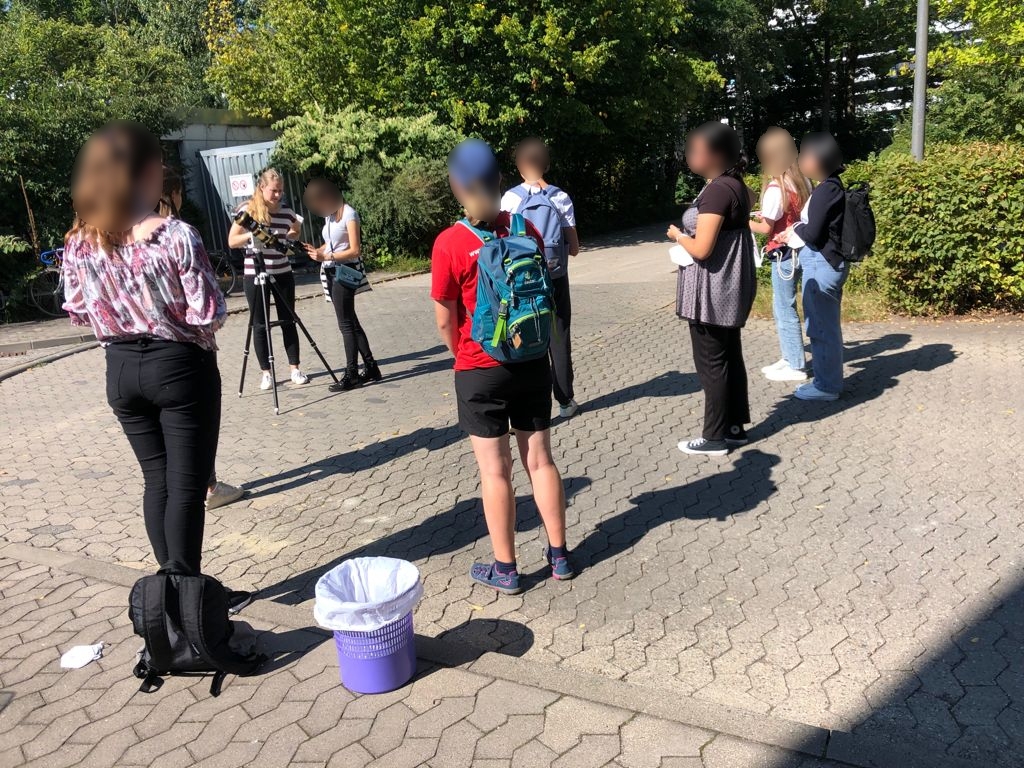ECAP takes part in Girls and Technology Event
Like many other chairs of the faculties of Science and Engineering, the ECAP took part again in the “Girls and Technology Event” (Mädchen-und-Technik Praktikum). For one week, around 50 girls from grades 7 – 12 from schools in the surrounding area were given an insight into astronomy, astroparticle physics and the daily work at ECAP.
Due to the corona virus pandemic, we made sure that the participants were vaccinated, recovered or tested. Additional Covid-19 tests were also offered and carried out at all stations of the event. Afterwards, the students were able to look through a solar telescope and see the solar activity in the form of dark spots on the sun. Luckily for us, the weather was perfect for the whole week, so that the participants were able to take photos of the sun with their mobile phones.
During the event, we also presented the telescopes with which we work and conduct research on a daily basis. The focus was on gamma-ray telescopes such as Fermi-LAT and Imaging Atmospheric Cherenkov Telescopes (IACTs) such as H. E. S. S. and CTA. Of the latter, we exhibited a prototype with mirrors and a camera. Thus, the students were able to recognize the principle and functioning of such a telescope very well, and were able to take a photo of themselves with the telescopic camera and take home a printed version.
Our chair staff also introduced the girls to the different current research fields within astronomy and astroparticle physics. Our typical daily professional life was also met with great interest: From teaching and research at the university, the exchange of research and experience with other universities and institutes at home and abroad, networking at international conferences, to the development, construction and data acquisition of telescopes.
Finally, the students were able to recreate an astronomical object – a pulsar – made of clay and two LEDs and take home as a reminder of their participation in the Girls and Technology event at ECAP.
We very much hope that we have been able to inspire the students about astronomy and astroparticle physics and that they can now imagine our everyday professional life better so that they may consider studying and pursuing a career in this direction.

